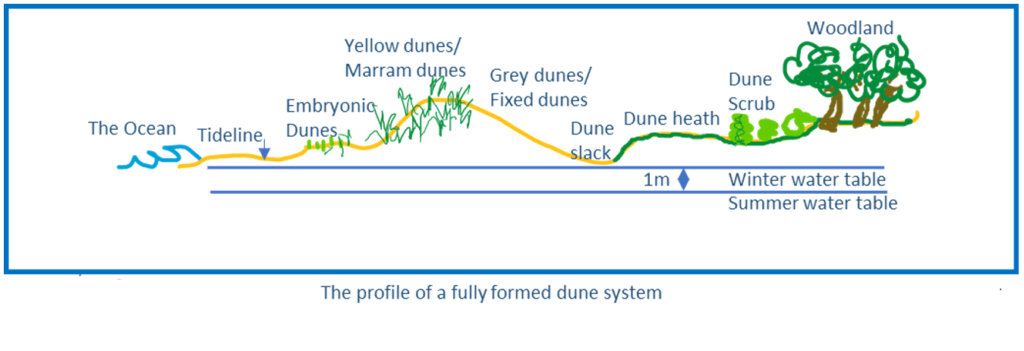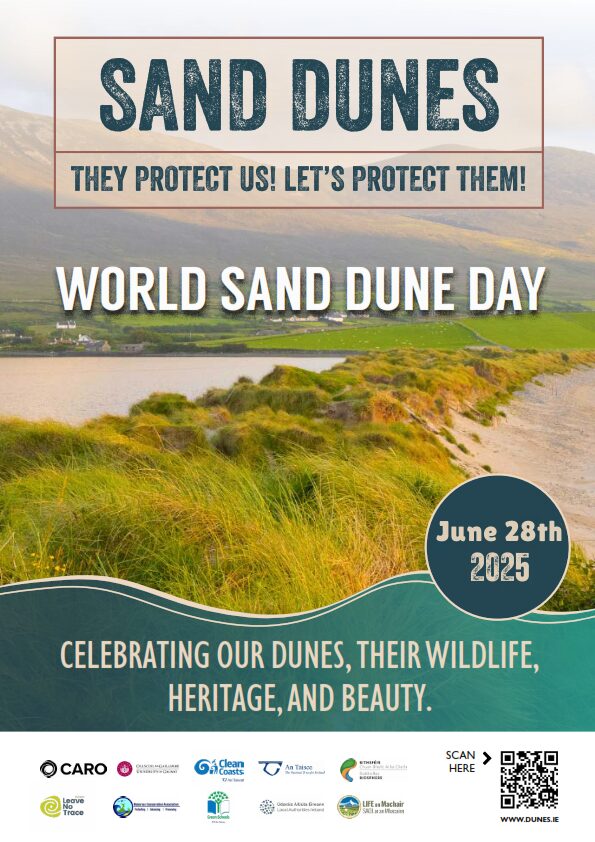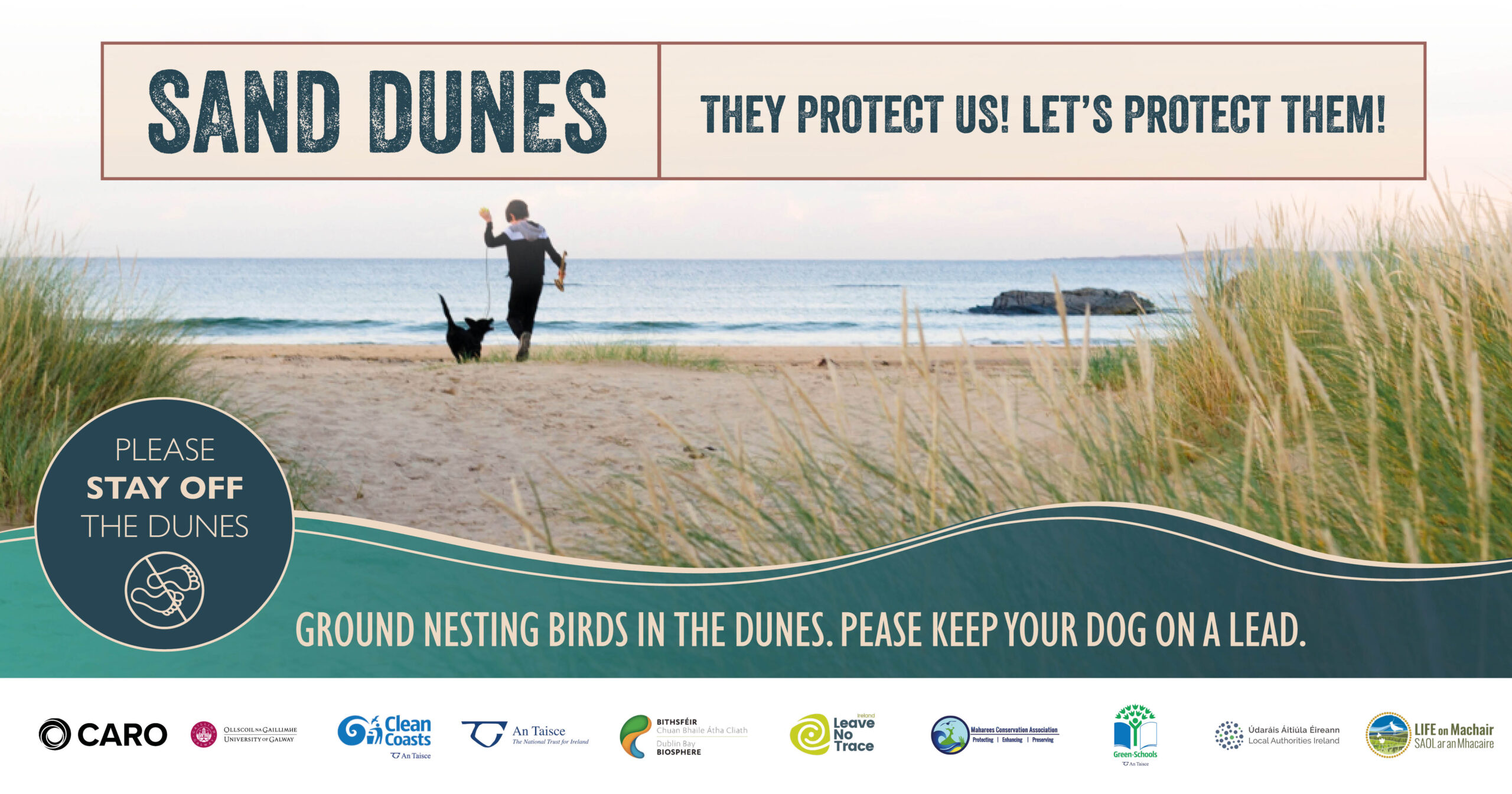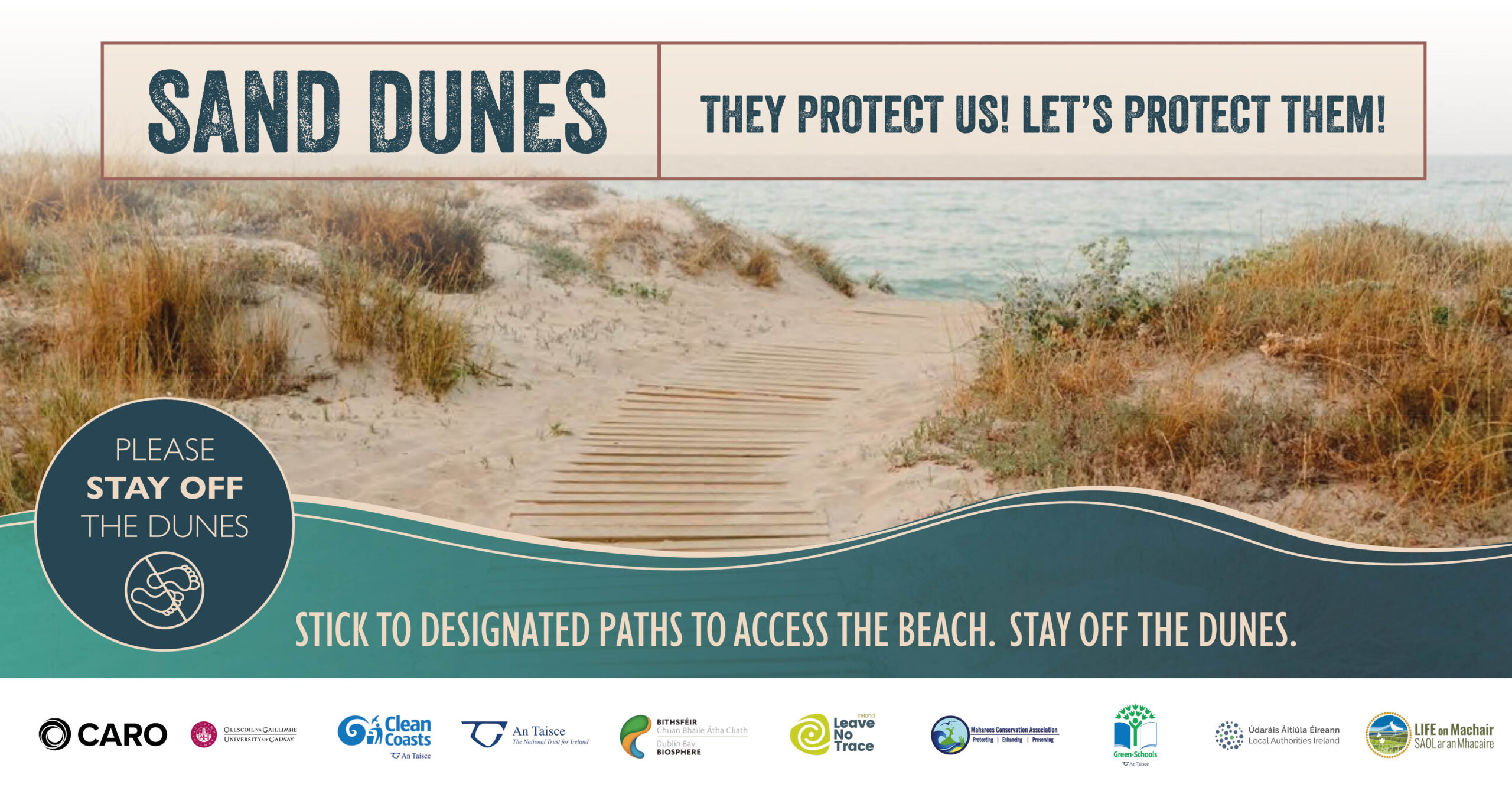Join us for World Sand Dune Day
World Sand Dune Day is held on the last Saturday of June annually and it falls on the 28th of June in 2025 and to mark the day Clean Coasts are talking all things Sand Dune!
Clean Coasts has been involved in the protection and conservation of the Irish coastline for more than 20 years. In that time we have supported many coastal communities in their conservation endeavours through project facilitation of dune restoration works, hosting awareness raising events, developing educational resources and interpretive signage, creating campaigns such as ‘Enjoy and Protect’ and collaborating on national projects and campaigns such as #ProtectOurDunes.
Our coastal sand dunes play a huge role in coastal protection, for some coastal communities they are the first line of defence against coastal flooding and storm-force winds. They are also an important habitat for many plants and animals.
About Sand Dunes
Ireland’s sand dune systems have been developing for around 5,000 years. Their sand originates from glacial deposits which over time has been shaped by the tide and wind to create dunes. During this cyclical process, sand is transferred between dunes, adjoining beaches and offshore sandbanks. Resulting in dynamic landforms that are continually changing through erosion and accretion. In recent times erosion has accelerated due to factors relating to climate change i.e., increased storm force and rising sea levels.
From a human perspective, dunes offer natural protection against high seas and storms. However, erosion can cause sand to blow inland and flooding if the dune area is breached. Therefore, it is important to be aware of their fragility and constantly changing state when developing near them.
Coastal Dune Habitats
A well-established dunes system should consist of the following habitats:
Embryonic Dunes are the early stages of dune development. They are formed when sand and germinating plant seeds accumulate on drift debris along and above the hightide line.
Marram Dunes are located behind embryonic dunes and are rarely ever submerged. The name marram dune comes from the presence of marram grass. This grass plays an important role in the development of dunes systems. It anchors sand through its deep-rooted network, whilst also trapping sand above, adding height to the dunes. Marram grass also acts as a shelter to areas behind it, allowing other plants to colonise and take hold, forming Fixed Dunes.
Fixed Dunes are more stable than marram dunes. The presence of mosses and lichens give good ground coverage helping stabilise them, which in turn allows other plants and wildlife to take hold.
Dune Scrub and Woodland occur when larger scrub and woodland species replace herbaceous plants. This type of habitat is not very common in Ireland due to agricultural practices and amenity development.
Dune Grassland occurs when dunes are grazed.
Dune Slack can be found in the hollows and blowouts of dune systems. These areas are water-filled due to their proximity to groundwater level, however, they may dry up during the summer. They are very diverse and nutrient-rich habitats.
To find out more about sand dunes and other habitats, download our Marine Habitat and Coastal Zones directory below.
Dunes Erosion
In recent times erosion has accelerated due to factors relating to climate change, i.e., increased storm force and rising sea levels. These events can cause sand to blow inland and result flooding if the dune area is breached. Therefore, it is important to be aware of their fragility and ever-changing state if developing beside them.
Our interaction with coastal dunes is also exacerbating erosion. One major issue is the removal of sand from beaches. Coastal sand is, for the most part, a finite resource. Its depletion impedes on the further development of dunes and nourishment of our beaches. Other activities putting dune systems at risk are overgrazing, trampling, hard engineering and fires.
When we walk in the dunes the following things happen:
- We erode the marram grass that grows there, uncovering the sand beneath.
- The wind then starts to blow this sand away bit by bit, causing part of the dune to disappear, this is called a blowout.
- This sand can end up blowing onto land, buildings and roadways causing lots of problems for local people.
- Blowouts can also create openings in the dunes, allowing water from the ocean to flow freely onto land, flooding homes and businesses.
#ProtectOurDunes
Coastal sand dunes are an amazing piece of natural engineering. They are ever-changing due to their make-up of sand and the elements they are exposed to along the coast. They play huge role in coastal protection and for some coastal communities they are the first line of defence against coastal flooding and high winds. These fragile landforms are also an important habitat for many animals and plants such as marram grass. When we walk or carry out other activities out in sand dunes we erode this grass. This contributes to the breakdown of the dunes, degrades the habitat and impacts wildlife residing there.
Clean Coasts has been involved in the protection and conservation of the Irish coastline for almost 20 years. In that time we have supported many coastal communities in their conservation endeavours through project facilitation of dune restoration works, hosting awareness raising events, developing educational resources and interpretive signage, creating campaigns such as ‘Enjoy and Protect’ and collaborating on national projects and campaigns such as #ProtectOurDunes.
The #ProtectOurDunes campaign’s main aim is to highlight the issues created by recreational activities on sand dunes. It is a CARO led awareness campaign that is supported by many different organisations that have expertise in sand dune conservation, community engagement and communications.
To find out more about the Protect Our Dunes campaign, watch explainer videos and download useful posters and resources, click on the button below.
Resources
We really welcome the fact people are embracing and exploring our amazing coastline, however, we also want to ask you to respect and protect these areas too.
Click on the #ProtectOurDunes posters below to download it and share it with your group, business, community, etc… to help us raise awareness about sand dunes, their importance and why we should protect them.





